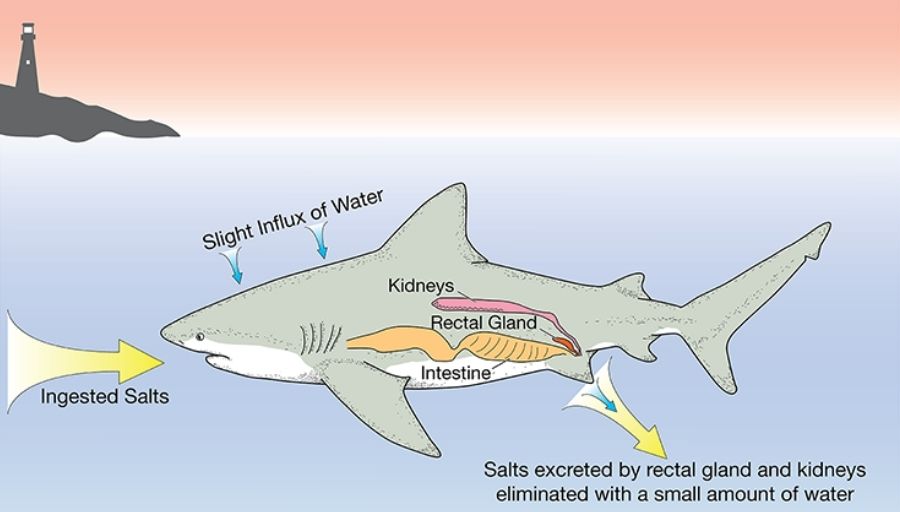Sharks maintain osmotic balance with seawater. The blood of the shark is usually isotonic to its watery home. This means that there is an equal concentration of solutes within their body as there are in the ocean in which they live.
Are Sharks Osmoregulators Or Osmoconformers?
Sharks are known as osmoconformers because they maintain osmotic balance with seawater. This is the opposite of osmoregulators, which maintain a different osmotic balance to that of their environment. Marine animals are usually osmoconformers, while freshwater species are generally osmoregulators.
How Do Sharks Osmoregulate?
The sharks’ bodies are particularly high in urea and trimethylamine N-oxide. Urea is essential for the metabolism of compounds containing Nitrogen within their bodies and tissues.
It is used to carry Nitrogen out of the body in urine. Trimethylamine is a product of the decomposition of animals and plants. It smells fishy is low concentrations and like ammonia in high concentrations. This is what gives rotting fish its unbearable smell.
The urea also becomes evident after a shark has been dead for some time, giving it a smell that is quite chemical in nature. These substances assist to maintain the animal’s isotonicity.
This is important because it maintains balance and functionality at a cellular level. It also plays a vital role in the excretion of metabolic wastes (or those generated within the cell) from the body of the animal.
By ensuring that the cells are at a beable level in terms of the compounds within, the shark ensures that its entire body will function normally and efficiently.
To do this, sharks do not have to drink the seawater around them, as is the case with most bony fish. Rather, they keep waste chemicals in their body in high concentrations.
These act to change the diffusion gradient, enabling the shark to absorb water directly from the sea, rather than having to ingest it somehow. This means that almost all sharks are confined to saltwater habitats, and will die in fresh water. The Bull Shark is one exception.
It has been designed in such a way that it is able to change the way its kidneys work so that they rather excrete large amounts of watered-down urine.
This is just one method, albeit a vitally important one, that sharks implement to maintain balance within a rather specialised environment. It again proves to researchers and biologists that the body of the shark has been ingeniously designed to survive in its watery habitat.
